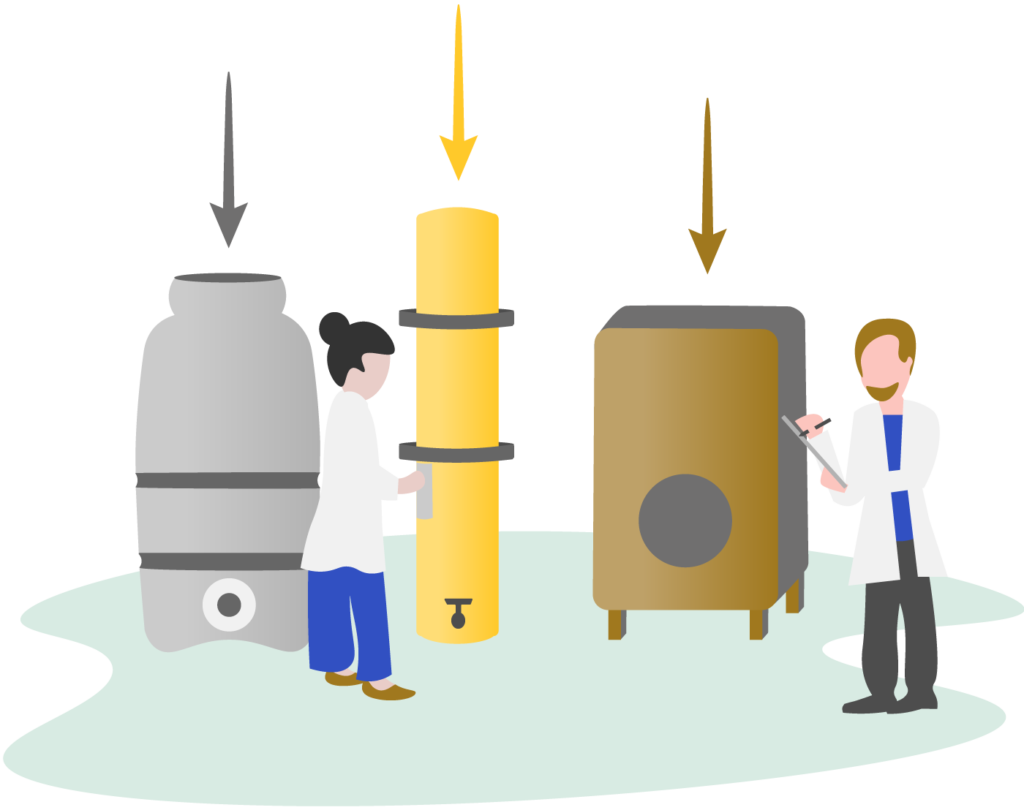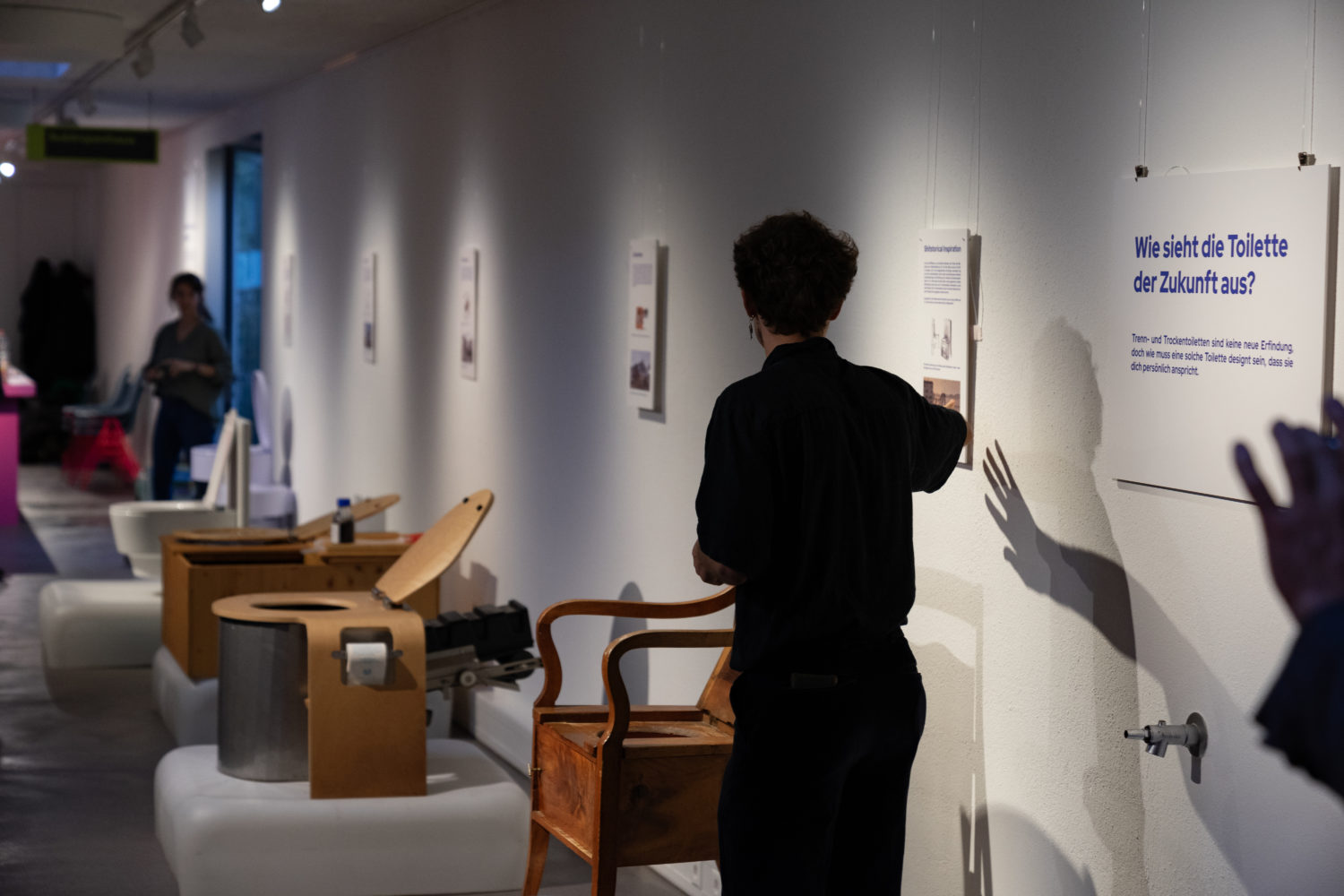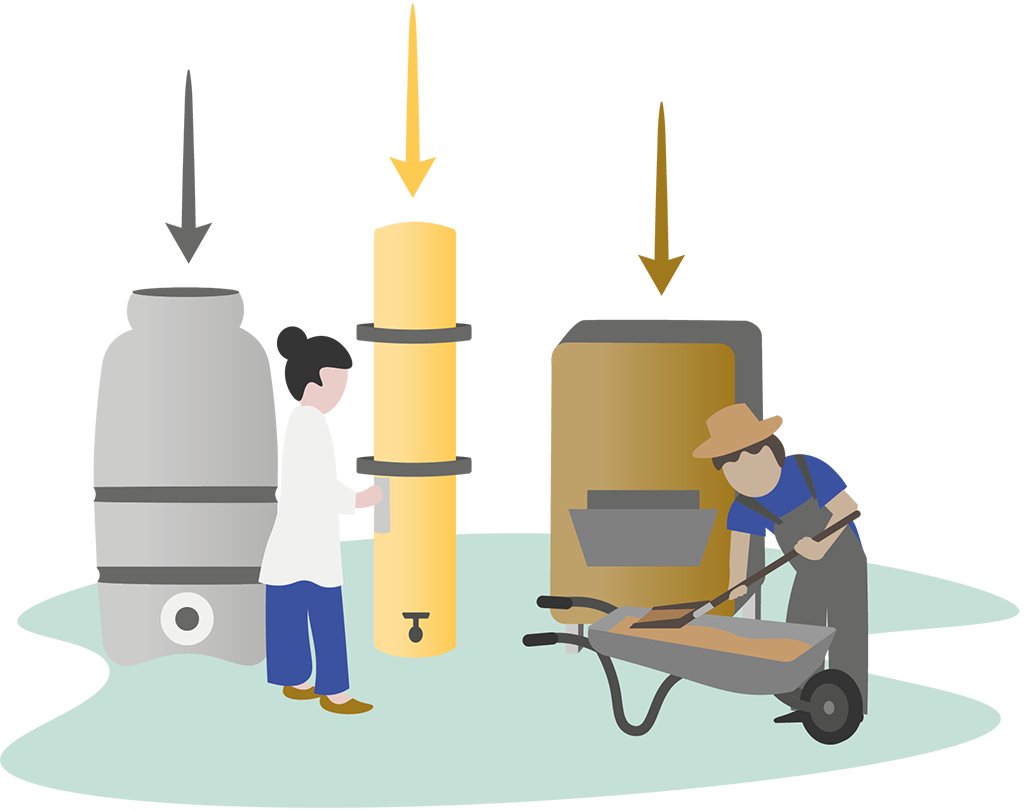Collecte & Traitement

Pour de nombreuses personnes, la réflexion sur les eaux usées s'arrête au moment de tirer la chasse d'eau ou d'enlever les cheveux de l'évier. Cette attitude est appelée "flush and forget" : Tirer la chasse et oublier [1]. Un acquis des pays industrialisés développés ? Il ne fait aucun doute que les canalisations des égouts et le traitement centralisé des eaux usées ont apporté d'énormes améliorations en termes de santé, de qualité de vie et de protection de l'environnement [2]. Mais qu'est-ce que les eaux usées ? Quels sont les risques ? Pour répondre à ces questions, il est utile d'élargir un peu le regard, de s'éloigner de la conception des eaux usées comme déchets et de mettre l'accent sur les ressources et surtout sur l'efficacité des ressources. Car ce qui est jeté dans les toilettes et qui se perd dans l'évier, ce sont des nutriments précieux, de l'énergie et surtout beaucoup d'eau !
Possibilités de traitement des eaux usées
A part les nutriments et l'énergie, les eaux usées contiennent également des agents de maladies tels que des bactéries, des virus et des parasites, ainsi qu'une concentration croissante de micropolluants (par exemple des médicaments, des hormones et des biocides). Le traitement des eaux usées permet de séparer ce qui est utile de ce qui est nuisible. Le premier est revalorisé en vue d'une réutilisation et le dernier est désactivé et éliminé. L'objectif est de consommer le moins d'énergie possible et d'éviter autant que possible les émissions de polluants et de gaz à effet de serre. Pour accomplir toutes ces tâches, les stations centrales d'épuration des eaux usées atteignent de plus en plus leurs limites [4]. La récupération des substances nutritives, en particulier, est coûteuse et demande beaucoup de ressources lorsqu'elle est effectuée de manière centralisée et après un mélange de différents types d'eaux usées dans les boues d'épuration. Les grandes quantités d'eau de rinçage (en général de qualité potable), qui sont une condition préalable à un fonctionnement fiable du tout-à-l’égout, deviennent également un problème en cas de pénurie d'eau croissante.
Traitement décentralisé comme alternative
En combinaison avec la séparation à la source, les traitements décentralisés, c'est-à-dire utilisés à proximité de la source, offrent plusieurs avantages dans ce contexte :
- Les flux séparés (eaux jaunes, noires, grises) sont moins complexes dans leur composition respective, ce qui permet d'appliquer des procédures spécifiques et très efficaces.
- En évitant les longues distances de transport et les périodes de conservation, il est possible d'empêcher les processus biologiques et ainsi d'éviter les émissions qui y sont liées.
- Les cycles de l'eau et des nutriments peuvent être fermés sur place.
- Sur la base de sous-systèmes modulaires, il est possible d'utiliser de nouvelles interfaces, d'intégrer d'autres flux de production (par ex. l'eau de pluie ou les déchets biologiques) et d'aborder ainsi la gestion des ressources de manière globale.
D'un point de vue économique, la gestion décentralisée et modulaire des eaux (usées) peut également être intéressante. Il ne sera pas question de remplacer complètement un système d’épuration des eaux usées existant basé sur les égouts. Dans les endroits isolés, en cas de croissance rapide de l'urbanisation ou de manque de capital d'investissement, les solutions décentralisées peuvent être plus rentables. La condition préalable est que la technologie nécessaire à cet effet pour les procédés de traitement spécifiques, soit standardisable et pas trop complexe, de sorte qu'elle puisse également être réglementée et contrôlée.
Procédés de traitement décentralisé pour eaux usées séparées
Différents procédés éprouvés sont déjà disponibles aujourd'hui pour le traitement décentralisé des eaux jaunes, ou urines diluées [5]. En règle générale, la première étape consiste à stabiliser l'urine (p. ex. par nitrification ou forte augmentation du pH) et la seconde à concentrer le substrat (distillation, évaporation). D'autres étapes intermédiaires existent pour filtrer les résidus de médicaments. Les agents pathogènes sont désactivés par une augmentation ciblée du pH ou par chauffage (pendant la distillation). L'objectif de ces procédés est de produire un engrais autorisé pour l'agriculture et l'horticulture [6].
Il existe également des technologies éprouvées pour le traitement décentralisé des eaux grises, qui varient de simples applications passives comme les filtres végétaux à des procédés plus complexes avec traitement à l'ozone et reminéralisation pour le traitement d'une eau potable de qualité [7].
Pour le traitement sur place des eaux noires / brunes, la plupart des expériences ont été faites jusqu'à présent avec des procédés biologiques (compostage, lombricompostage, bassins de stabilisation). Ici, c'est surtout la quantité d'eau de rinçage utilisée pour le transport et le traitement des eaux noires qui est déterminante. Les toilettes sèches, pour lesquelles aucune eau supplémentaire n'est utilisée, constituent un cas extrême. Dans le cas des toilettes à chasse d'eau traditionnelles, le rapport entre la quantité d'eau et de matières fécales est supérieur à 20. Dans ce cas, on utilise généralement un procédé de séparation solide-liquide, suivi de différents procédés pour les flux séparés. En raison de leur forte concentration en composés organiques, les eaux noires / brunes peuvent également être utilisées à des fins énergétiques. L'énergie stockée dans les matières fécales peut être utilisée comme chaleur industrielle dans le processus de traitement (p. ex. stérilisation) ou comme chaleur de chauffage pour un bâtiment [8].
Texte: David Hasler
Édition: Dorothee Spuhler, Gina Marti
Références
News about Collection & Treatment

Event
19.11.2024 |
Stadtgärtnerei
World Toilet day & Finissage

Event
09.11.2024 |
Stadtgärtnerei
Martinimarkt

Event
18.10.2024 |
Lidernenhütte
Alpine Abwasseraufbereitung: Exkursion

Event
21.06.2024 |
Trub


